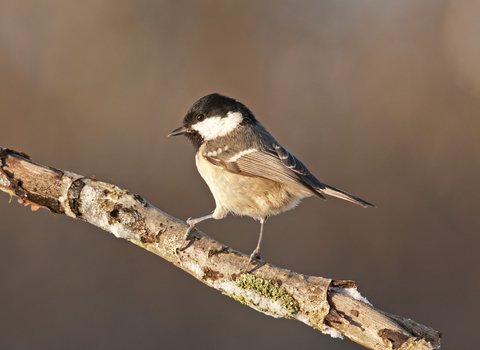
©Dawn Monrose
Coal tit
The coal tit is mainly found in coniferous woodland, but can also be spotted in gardens and parks. It is smaller than the great tit, but has a similar bicycle pump-like song.
Scientific name
Periparus aterWhen to see
January to DecemberSpecies information
Category
Statistics
Length: 12cmWingspan: 19cm
Weight: 9g
Average lifespan: 2 years
Common. Classified in the UK as Green under the Birds of Conservation Concern 5: the Red List for Birds (2021).
Habitats
About
The coal tit is a small tit of coniferous woodland, although it can be found in parks and gardens where there are conifer trees. It nests in holes in trees, but is just as happy to use nestboxes. Coal tits are active feeders, hunting out insects and spiders among the smaller branches and leaves of trees in woodlands. But they are also well-adapted to gardens and towns and will visit birdtables and feeders. In winter, they form flocks with other tits, roaming woodlands and gardens. They have a song of repeated phrases that are similar to those of great tits, but sound thinner and more high-pitched, like bicycle pumps.How to identify
The coal tit is grey above and buff below, with white cheeks, a black cap and a white neck patch. It can be distinguished from the similar marsh tit and willow tit by its white wingbars and the white patch at the back of its head; marsh and willow tits have plain wings and entirely black caps.Distribution
Widespread.Did you know?
There are several subspecies of coal tit: the Irish subspecies (P. a. hibernicus) has pale, sulphur-yellow cheeks, whereas the British subspecies (P. a. britannicus) has white cheeks.Watch
Coal tit (https://vimeo.com/646932048)
Tom Hibbert
